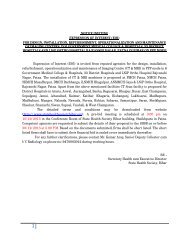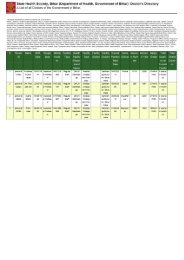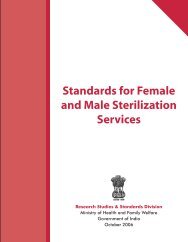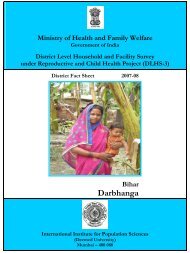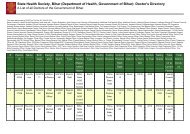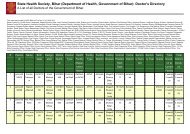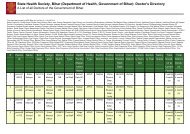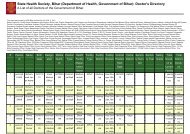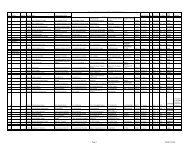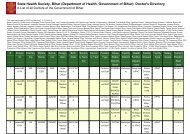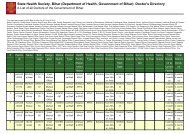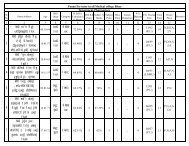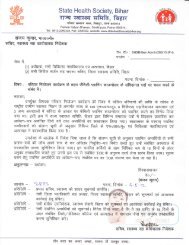District Health Action Plan - STATE HEALTH SOCIETY-----BIHAR
District Health Action Plan - STATE HEALTH SOCIETY-----BIHAR
District Health Action Plan - STATE HEALTH SOCIETY-----BIHAR
You also want an ePaper? Increase the reach of your titles
YUMPU automatically turns print PDFs into web optimized ePapers that Google loves.
<strong>District</strong> <strong>Health</strong> <strong>Action</strong> <strong>Plan</strong><br />
The decentralized development is one of major component of state and national programmes.<br />
Under NRHM, there is well defined structure and process of adopted decentralized<br />
developmental process. The preparation of district health action plan is one of all the stages<br />
of decentralized health action plan development. The <strong>District</strong> <strong>Health</strong> <strong>Action</strong> <strong>Plan</strong> integrates<br />
the various interrelated components of health to facilitate access to services and ensure<br />
quality of care. These different components are as detailed below:<br />
� Resources: health manpower, logistics and supplies, community resources and<br />
financial resources, voluntary sector health resources.<br />
� Access to services: public and private services as well as informal health care<br />
services; levels of integration of services within public health system.<br />
� Utilization of services: outcomes, continuity of care, factors responsible for possible<br />
low utilization of public health system.<br />
� Quality of care: technical competence, interpersonal communication, and client<br />
satisfaction, client participation in management, accountability and redress<br />
mechanisms.<br />
� Community: needs, perceptions and economic capacities, PRI involvement in health,<br />
existing community organizations and modes of involvement in health.<br />
� Socio-epidemiological situation: local morbidity profile, major communicable<br />
diseases and transmission patterns, health needs of special social groups (e.g.<br />
Adivasis, migrants, very remote hamlets)<br />
Under NRHM, there is focus on adopting a synergistic approach as a key strategy for<br />
community based planning by relating health and diseases to other determinants of good<br />
health such as safe drinking water, hygiene and sanitation. Implicit in this approach is the<br />
need for situation analysis, stakeholder involvement in action planning, community<br />
mobilization, inter-sectoral convergence, partnerships with NGO and the private sector, and<br />
increased local monitoring. The planning process demands stocktaking, followed by planning<br />
of actions by involving programme functionaries and community representatives at district<br />
level.<br />
Objectives of the <strong>District</strong> <strong>Health</strong> <strong>Action</strong> <strong>Plan</strong><br />
The aim of the present study is to prepare DHAP based on the broad objective of the NRHM.<br />
Specific objectives of the process are:<br />
� To identify critical health issues and concerns with special focus on vulnerable<br />
/disadvantage groups and isolated areas and attain consensus on feasible solutions.<br />
20 | P a g e D i s t r i c t H e a l t h A c t i o n P l a n 2 0 1 2 - 1 3 D H S , S a r a n



